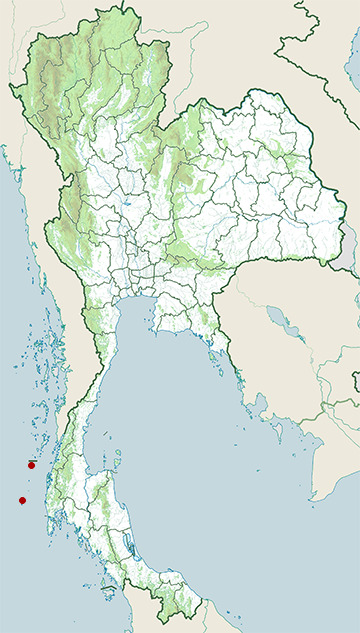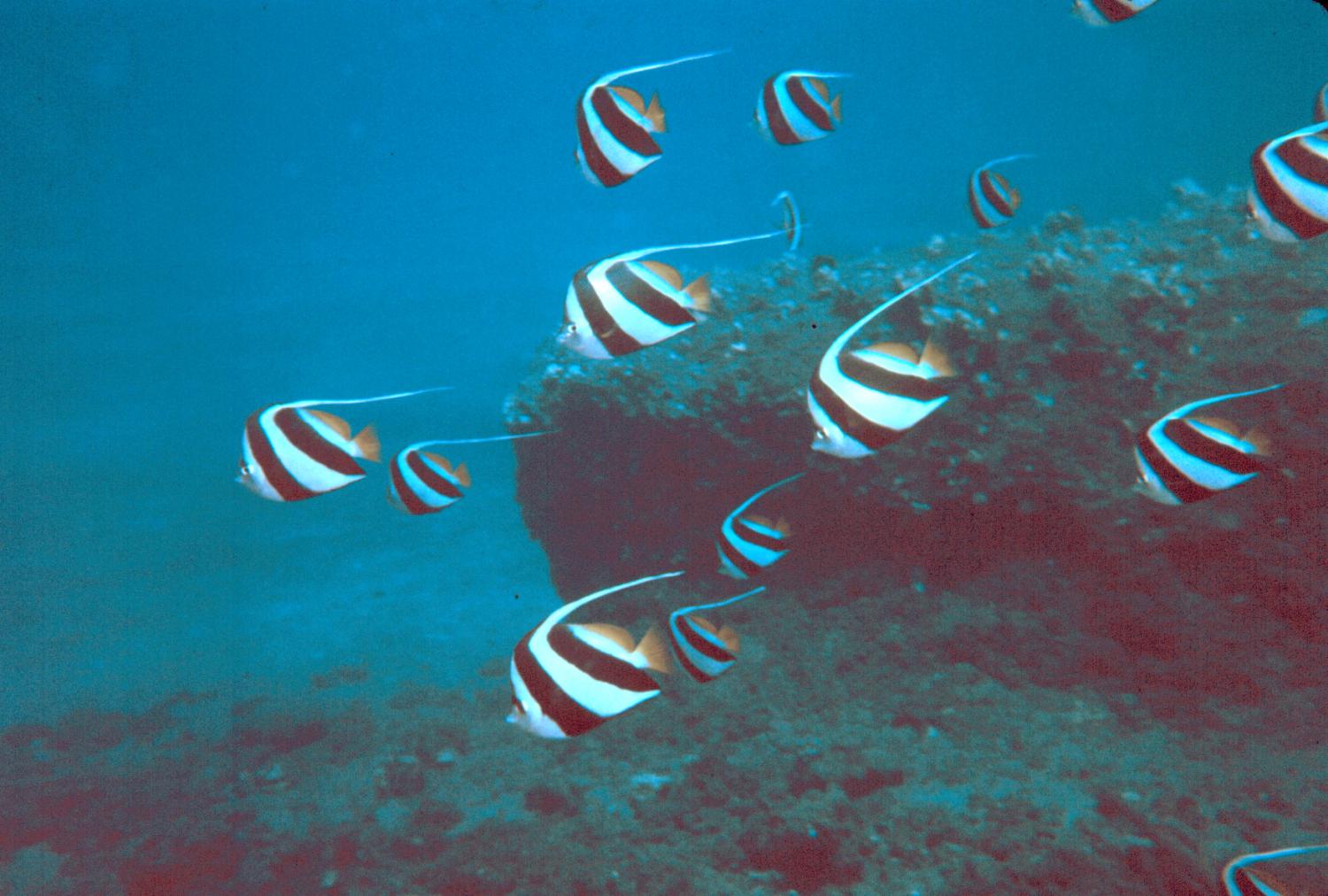Species of Thailand
Pennant coralfish
Heniochus acuminatus
Carolus Linnaeus, 1758
The pennant coralfish (Heniochus acuminatus), also known as the longfin bannerfish, reef bannerfish or coachman, is a species of fish of the family Chaetodontidae, native to the Indo-Pacific area.
Description
The pennant coralfish is a small-sized fish that can reach a maximum length of 25 cm. However, the average size generally observed in the nature oscillates around 15 cm.
Its body is compressed laterally, the first rays of its dorsal fin stretch in a long white filament. The background color of its body is white with two large black diagonal bands. Beyond the second black stripe, the dorsal and the caudal fins are yellow. The pectoral fins are also yellow.
The head is white, the eyes are black and linked together by a black band. The snout, spotted with black, is a bit stretched with a small terminal protractile (it can be extend) mouth.
The juvenile doesn't have yet after the second black stripe any white area like adults.
The pennant coralfish can easily be confused with the quite similar schooling bannerfish, (Heniochus diphreutes ). The main and visible differences are: a longer snout for the reef bannerfish and spots on its snout are darker, the pelvic fin of the reef bannerfish is longer and has a rounded end unlike the schooling bannerfish which has a smaller and more angular end.
Distribution and habitat
The pennant coralfish is widespread throughout the tropical and subtropical waters of the Indo-Pacific from the eastern coast of Africa, Red Sea included, to Polynesia and from south Japan to the south of the Great Barrier Reef.
The reef bannerfish likes relatively deep waters from protected lagoon, channels or outer reef slopes from 15 to 75 meters deep.
Biology
The pennant coralfish lives in pairs and feeds on zooplankton in the water column and occasionally benthic invertebrates. Juveniles are solitary and can feed by cleaning other fishes.
Conservation status
The pennant coralfish is harvested for the aquarium trade in some geographical areas and it is commonly sold as a cheaper alternative to the Moorish idol, which is considered to be nearly impossible for most hobbyists to keep.
However, there do not appear to be any current threats to this species and it is listed as Least Concern (LC) by the IUCN.
Taxonomy
The pennant coralfish was first formally described as Chaetodon acuminatus in 1758 by Linnaeus in the 10th edition of Systema Natura. Linnaeus also described a species he named Chaetodon macrolepidotus which Georges Cuvier used as the type species for the genus Heniochus and which has since come to be regarded as a synonym of H. acuminatus.
This article uses material from Wikipedia released under the Creative Commons Attribution-Share-Alike Licence 3.0. Eventual photos shown in this page may or may not be from Wikipedia, please see the license details for photos in photo by-lines.
Scientific classification
- Kingdom
- Animalia
- Phylum
- Chordata
- Class
- Actinopterygii
- Order
- Perciformes
- Family
- Chaetodontidae
- Genus
- Heniochus
- Species
- Heniochus acuminatus
Common names
- English:
- Bannerfish
- Coachman
- Featherfin coralfish
- Longfin bannerfish
- Pennant bannerfish
- Pennant coralfish
- Reef bannerfish
- Wimple fish
- French:
- Cocher solitaire
- Garnaison
- Hénioche commun
- Pavillon
Synonyms
- Chaetodon mycteryzans, Laurence Theodore Gronow (1854)
- Chaetodon bifasciatus, George Shaw (1803)
- Taurichthys macrolepidotus, Carolus Linnaeus (1758)
- Heniochus macrolepidotus, Carolus Linnaeus (1758)
- Chaetodon macrolepidotus, Carolus Linnaeus (1758)
- Chaetodon acuminatus, Carolus Linnaeus (1758)
Conservation status

Least Concern (IUCN3.1)
Photos
Please help us review our species pages if wrong photos are used or any other details in the page is wrong. We can be reached via our contact us page.
Range Map

- Similan Islands
- Surin Islands
